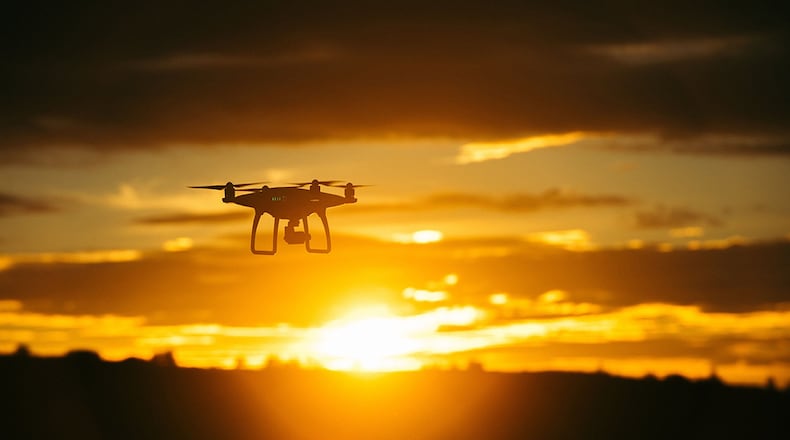With the Federal Aviation Administration stating that the number of drone-safety incidents has increased 50 percent from last year, now averaging 250 incidents per month of drones getting too close to aircraft or flying improperly, knowing the rules pertaining to drones will not only keep commercial aviation safe but keep flyers out of hot water as well.
Most drones purchased for holiday gifts are for non-commercial use, which are the ones discussed here. Be aware that to legally make money from using a drone, there are additional licensing rules and laws that apply to commercial use.
For hobby and recreational flights only, outside of five miles of Wright-Patterson Air Force Base, the FAA does not require pilot certification and no longer requires registration unless the aircraft weighs more than 55 pounds. However, the drone cannot interfere with, and must give way to, all manned aircraft and, if within five miles of an airport, the drone operator must provide the airport operator and air traffic control tower or air traffic facility with prior notice.
Also, drone operators must maintain visual line-of-sight of their aircraft at all times and follow community-based safety guidelines. Full details on the laws applicable to the recreational use of drones can be found in Public Law 112-95, Section 336 or go to www.faa.gov/uas. In addition, the FAA's website hosts a wealth of information for new flyers.
"For the new sUAS hobbyist, the Federal Aviation Administration provides several resources to allow a sUAS operator to determine the best place to fly a sUAS," said David Egner, 88th Operations Support Squadron Special Operations director. "One such site is https://www.faa.gov/uas/getting_started/fly_for_fun. Additionally, a mobile app 'B4UFLY' is available, free of charge in the app store and is a very useful resource for sUAS pilots."
If a drone operator wants to fly in the five miles surrounding Wright-Patterson, but not on the installation itself, there’s a few more things to consider. Wright-Patterson’s sUAS policy, dated May 12, 2017, states that beyond checking the “B4UFLY” app and adhering to the rules posted on the FAA’s website, drone operators must email the 88 Operational Support Squadron for coordination. Full details on the information required for submission and who to send it to are in the policy letter. Unless the drone operation would endanger the operation of the National Airspace System, flyers will likely be approved but must wait for confirmation before flying.
When it comes to flying on WPAFB itself, the rules are even easier – if you’re not part of an authorized club, don’t. In fact, all sUAS and model aircraft flights for recreational use on WPAFB are strictly prohibited. For those that violate the policy, unauthorized sUAS flights are immediately reported to the 88th Security Forces Squadron for investigation, according to Egner.
“The sUAS policy memorandum, if properly adhered to, ensures safe operations of sUAS within the airspace in and around Wright-Patterson AFB,” said Egner. “This also limits a threat of a collision with aircraft within our allotted airspace.”
Even if a drone operator has permission or is legally allowed to fly in an area, there are still several guidelines to keep in mind, according to the FAA.
• Fly at or below 400 feet and stay away from surrounding obstacles.
• Keep your sUAS within sight.
• Never fly near other aircraft.
• Never fly over groups of people.
• Never fly over stadiums or sporting events.
• Never fly near emergency response efforts.
• Never fly under the influence of drugs or alcohol.
• Understand airspace restrictions and requirements.
With hunting season here, some drone operators may want to use their aircraft to scout out areas or look for prey. Keep in mind that laws vary greatly across the country on the legalities of using drones for this purpose and many other non-standard uses.
The growth of drones is undeniable and many of them will be gifts this holiday season. As always, it’s up to the drone operator to thoroughly research and be aware of the applicable laws that pertain to their use of a drone while also ensuring the safety of other aircraft, personal property and people on the ground.
About the Author
